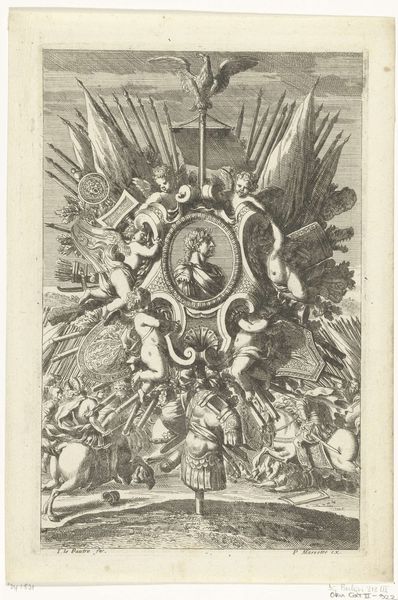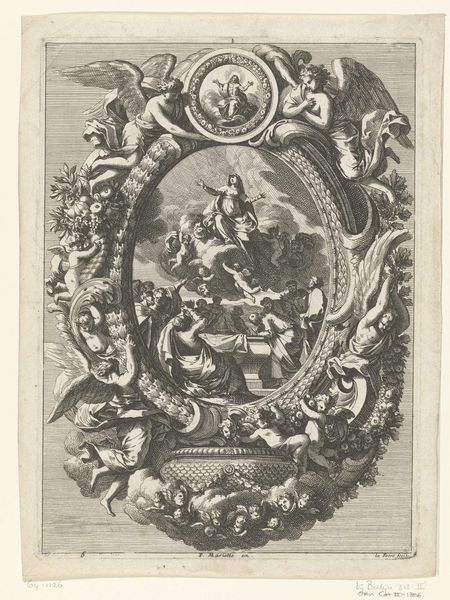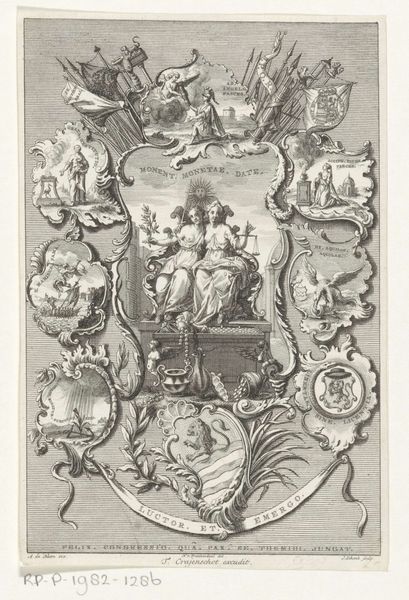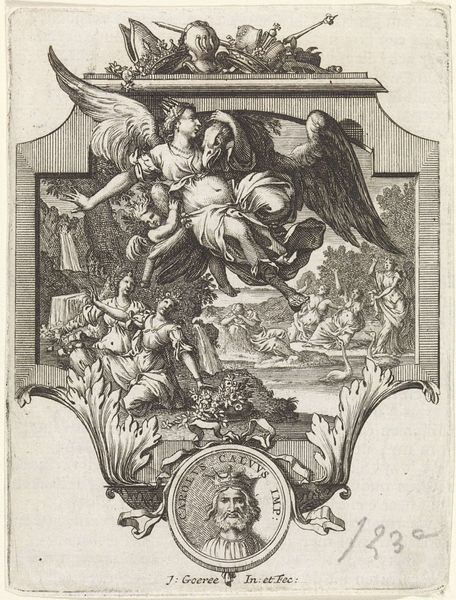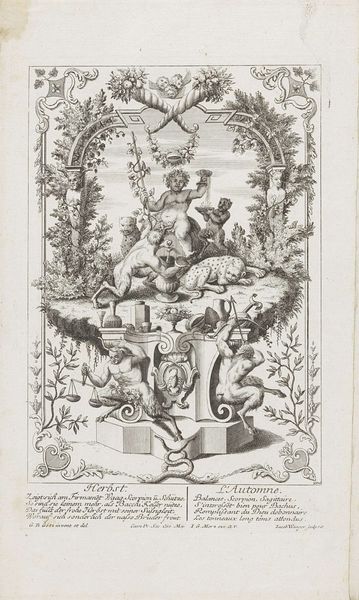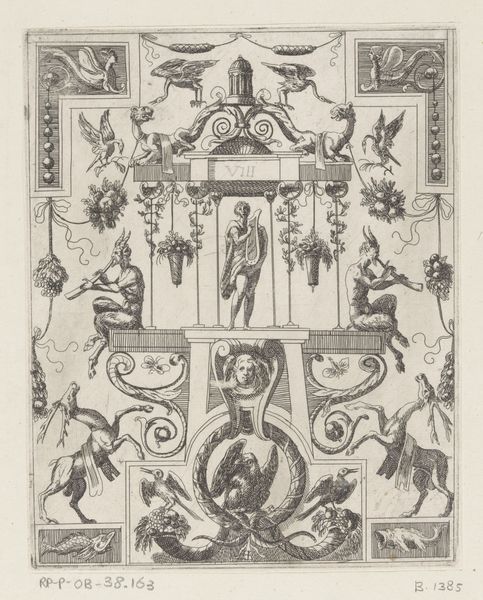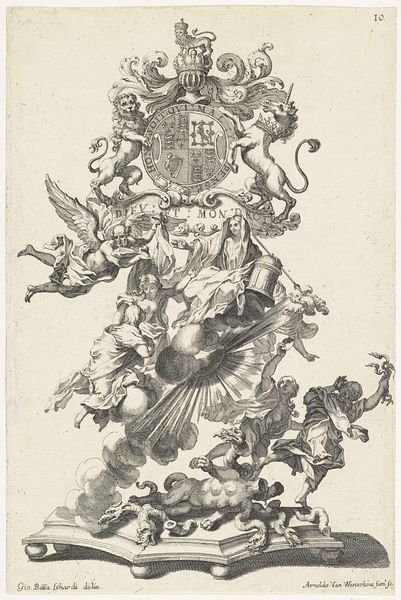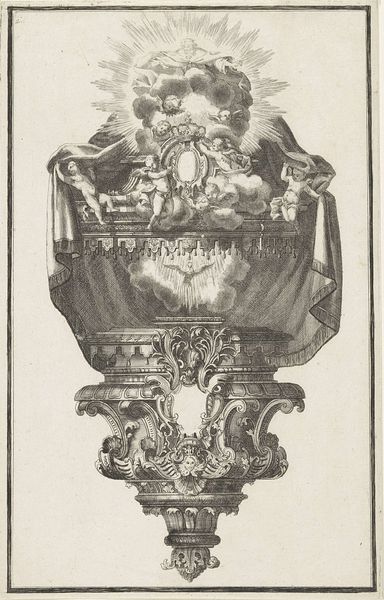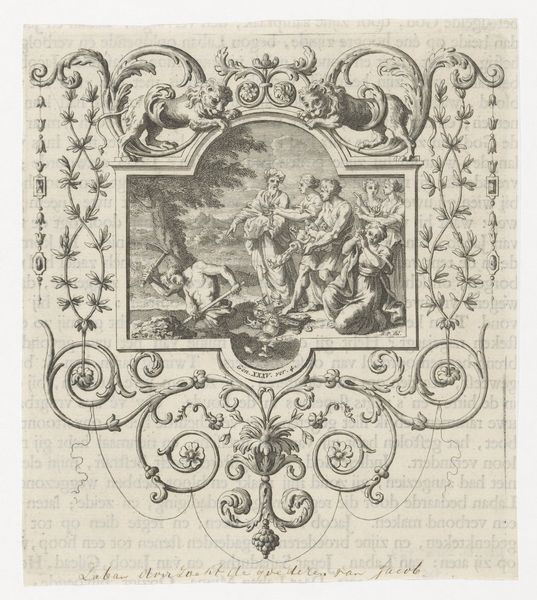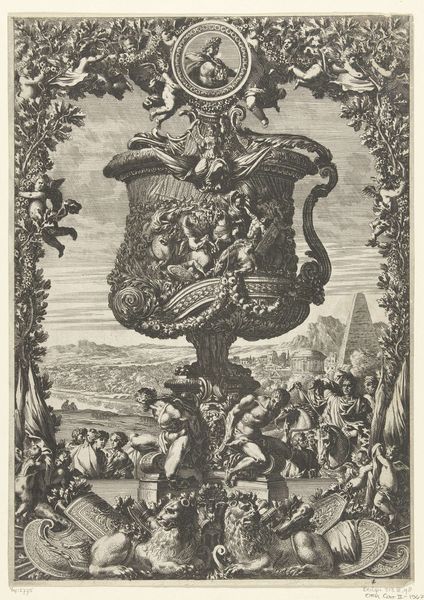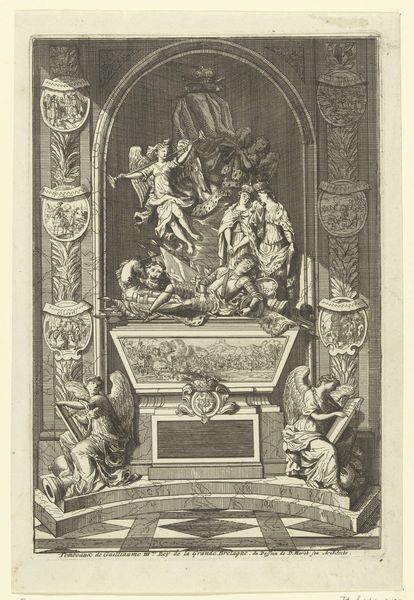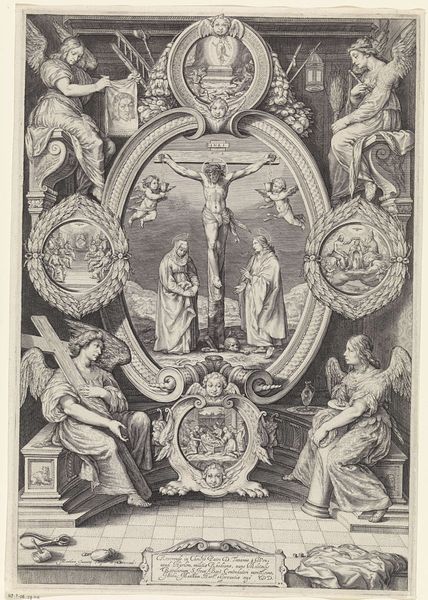
drawing, print, engraving
#
drawing
#
allegory
#
baroque
#
pen drawing
#
mechanical pen drawing
# print
#
pen illustration
#
pen sketch
#
figuration
#
ink line art
#
personal sketchbook
#
ink drawing experimentation
#
pen-ink sketch
#
line
#
pen work
#
sketchbook drawing
#
history-painting
#
engraving
Dimensions: height 275 mm, width 192 mm
Copyright: Rijks Museum: Open Domain
Curator: This pen and ink drawing, created by Arnold van Westerhout in 1687, is entitled “Cartouche met wapenschild van paus Innocentius XI”— or “Cartouche with coat of arms of Pope Innocent XI." The Baroque style is striking. Editor: My first thought is that this looks incredibly detailed. There’s almost too much going on. What I’m struck by is the very controlled application of ink. Curator: Exactly, this is a very complex drawing on paper which depicts Pope Innocent XI’s coat of arms as the focal point. But what about the social and political backdrop? Editor: Well, Innocent XI reigned during a time of considerable conflict. We see in the lower section figures who appear subjugated–enslaved. We are given no means of assessing the context in which they found themselves enslaved or any sort of personhood, really, due to the artist rendering them secondary and outside of the focus. It certainly points to broader themes of power, subjugation and religious authority at the time. Curator: The use of allegory here is also important to unpack this complex power structure. You’ve got the putti holding laurel wreaths, for example, symbols of victory, flanking the papal coat of arms. How do you view this piece as an example of Baroque artistic expression, specifically in terms of its material production? Editor: From a materials perspective, you see in this ink drawing an emphasis on line. Look closely—notice how each figure seems clearly articulated through precisely applied ink strokes. The mechanical pen work evident in its creation reflects a desire for accuracy of line but what I notice is the skill employed to depict what power is at stake and who had it. Curator: Absolutely. The meticulous application of ink suggests a conscious effort to present an idealized and enduring representation of papal authority but what are we seeing that falls outside the frame of the empowered and more aligned with our present view of injustice? Editor: The level of detail throughout prompts me to question what materials, or human capital, facilitated such projects of representation. It speaks to unequal access and social disparity of access and representation during that historical moment. How does this artwork resonate today in light of ongoing conversations about religious institutions and societal power structures? Curator: This intricate piece not only highlights Baroque aesthetics and printmaking techniques, it reveals the crucial labor behind these depictions of power—raising pertinent questions about authority, representation, and justice that resonate into our times. Editor: Indeed, a potent reminder that visual representations often veil more complex social histories that require further unpacking to recognize their full material and social impact.
Comments
No comments
Be the first to comment and join the conversation on the ultimate creative platform.
